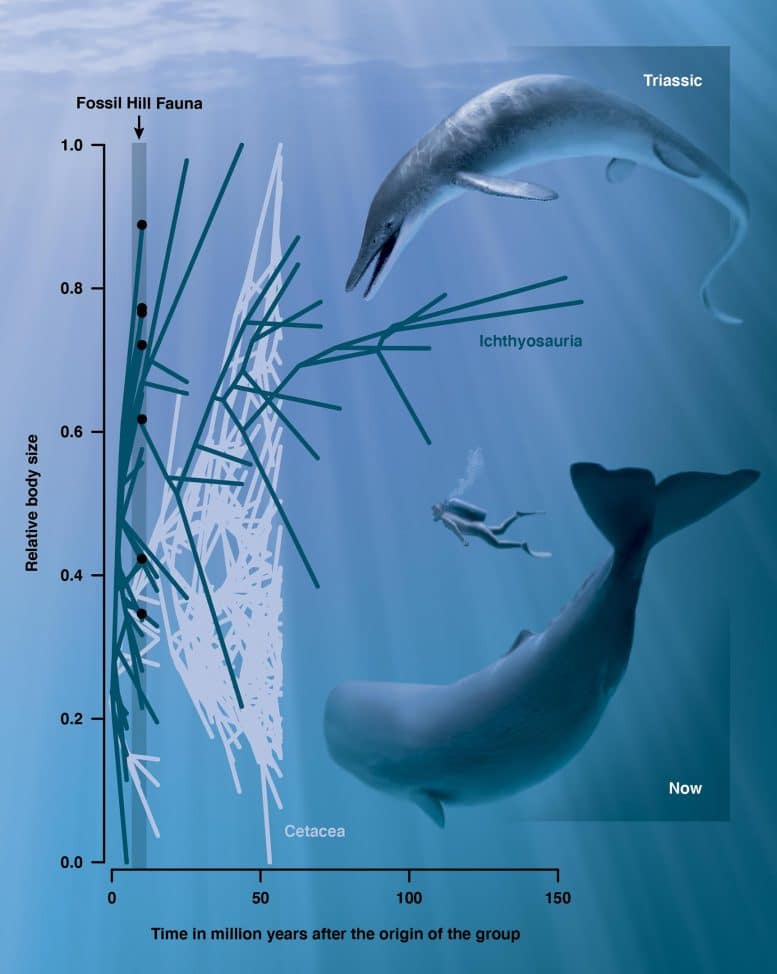The skull of the first giant creature to ever inhabit the Earth, the ichthyosaur “Cymbospondylus youngorum” currently on display at the Natural History Museum of Los Angeles County (NHM). Credit: Photo by Natalja Kent, courtesy of the Natural History Museum of Los Angeles County (NHM)
Newly Discovered Species of Ichthyosaur Was Behemoth of Dinosaurian Oceans
The two-meter skull of a newly discovered species of giant ichthyosaur, the earliest known, is shedding new light on the marine reptiles’ rapid growth into behemoths of the Dinosaurian oceans, and helping us better understand the journey of modern cetaceans (whales and dolphins) to becoming the largest animals to ever inhabit the Earth.
While dinosaurs ruled the land, ichthyosaurs and other aquatic reptiles (that were emphatically not dinosaurs) ruled the waves, reaching similarly gargantuan sizes and species diversity. Evolving fins and hydrodynamic body-shapes seen in both fish and whales, ichthyosaurs swam the ancient oceans for nearly the entirety of the Age of Dinosaurs.
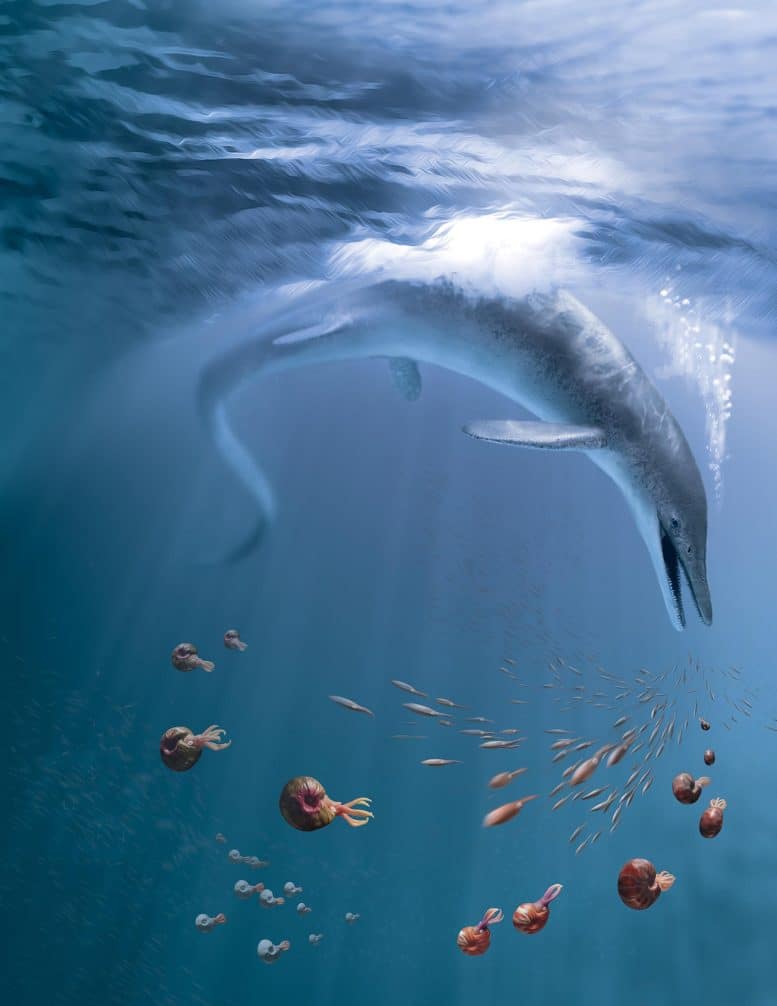
“Ichthyosaurs derive from an as yet unknown group of land-living reptiles and were air-breathing themselves,” says lead author Dr. Martin Sander, paleontologist at the University of Bonn and Research Associate with the Dinosaur Institute at the Natural History Museum of Los Angeles County (NHM). “From the first skeleton discoveries in southern England and Germany over 250 years ago, these ‘fish-saurians’ were among the first large fossil reptiles known to science, long before the dinosaurs, and they have captured the popular imagination ever since.”
Excavated from a rock unit called the Fossil Hill Member in the Augusta Mountains of Nevada, the well-preserved skull, along with part of the backbone, shoulder, and forefin, date back to the Middle
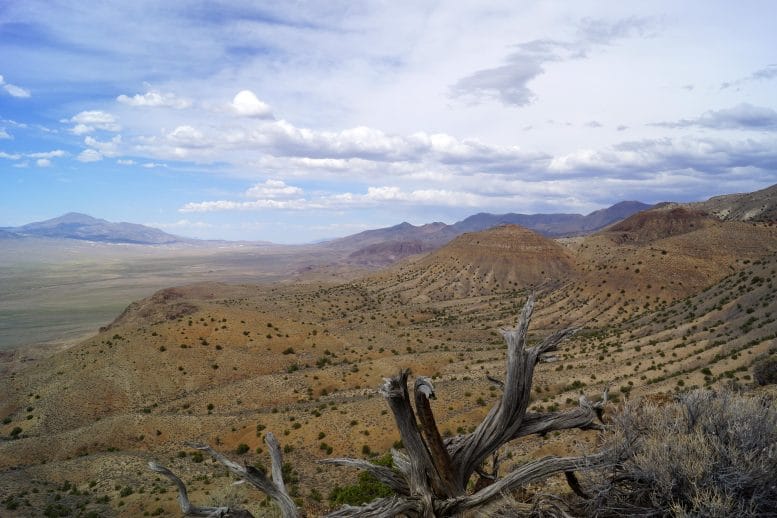
“The importance of the find was not immediately apparent,” notes Dr. Sander, ”because only a few vertebrae were exposed on the side of the canyon. However, the anatomy of the vertebrae suggested that the front end of the animal might still be hidden in the rocks. Then, one cold September day in 2011, the crew needed a warm-up and tested this suggestion by excavation, finding the skull, forelimbs, and chest region.”
The new name for the species, C. youngorum, honors a happy coincidence, the sponsoring of the fieldwork by Great Basin Brewery of Reno, owned and operated by Tom and Bonda Young, the inventors of the locally famous Icky beer which features an ichthyosaur on its label.
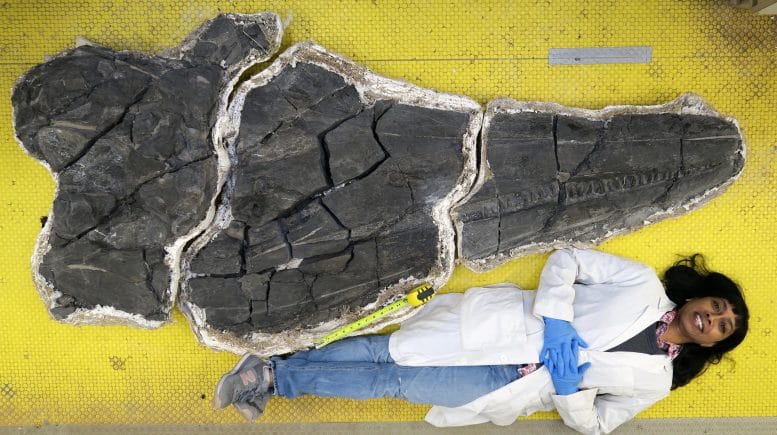
In other mountain ranges of Nevada, paleontologists have been recovering fossils from the Fossil Hill Member’s limestone, shale, and siltstone since 1902, opening a window into the Triassic. The mountains connect our present to ancient oceans and have produced many species of ammonites, shelled ancestors of modern cephalopods like cuttlefish and octopuses, as well as marine reptiles. All these animal specimens are collectively known as the Fossil Hill Fauna, representing many of C. youngorum’s prey and competitors.
C. youngorum stalked the oceans some 246 million years ago, or only about three million years after the first ichthyosaurs got their fins wet, an amazingly short time to get this big. The elongated snout and conical teeth suggest that C. youngorum preyed on squid and fish, but its size meant that it could have hunted smaller and juvenile marine reptiles as well.
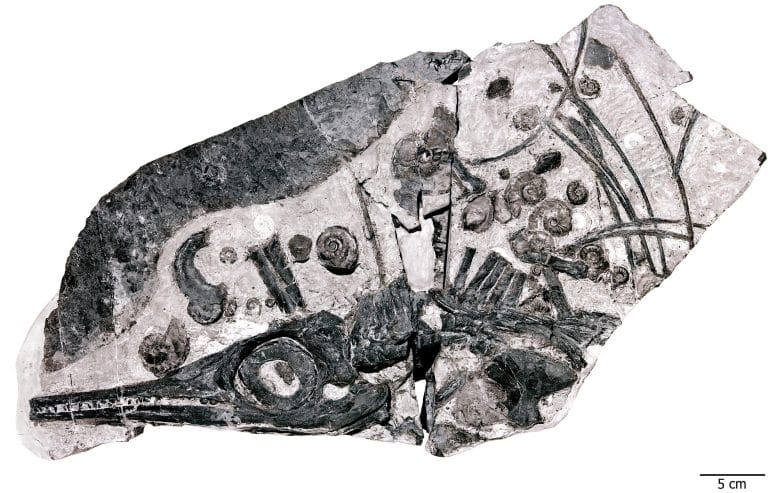
The giant predator probably had some hefty competition. Through sophisticated computational modeling, the authors examined the likely energy running through the Fossil Hill Fauna’s food web, recreating the ancient environment through data, finding that marine food webs were able to support a few more colossal meat-eating ichthyosaurs. Ichthyosaurs of different sizes and survival strategies proliferated, comparable to modern cetaceans’— from relatively small dolphins to massive filter-feeding baleen whales, and giant squid-hunting sperm whales.
Co-author and ecological modeler Dr. Eva Maria Griebeler from the University of Mainz in Germany notes, “due to their large size and resulting energy demands, the densities of the largest ichthyosaurs from the Fossil Hill Fauna including C. youngourum must have been substantially lower than suggested by our field census. The ecological functioning of this food web from ecological modeling was very exciting as modern highly productive primary producers were absent in
